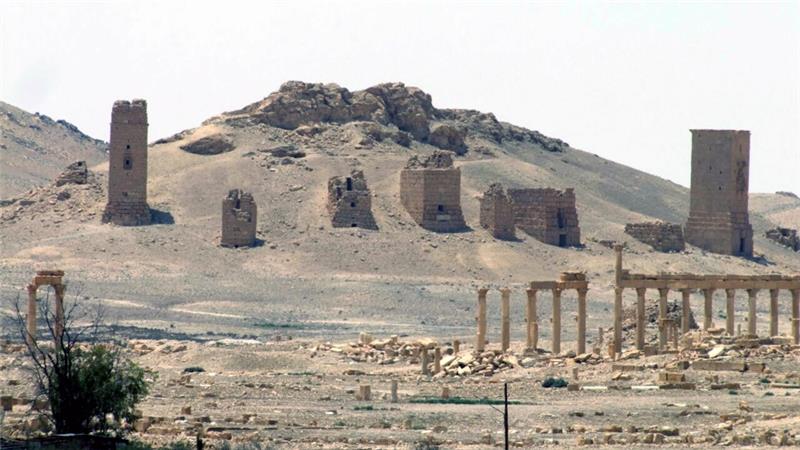OPINION by James Denselow – In the shadow of the terrible air strikes that rained down on a marketplace in the Damascus suburb of Douma earlier this week killing and maiming hundreds, came another death on Tuesday that added to Syria’s death toll of a quarter of a million.
Khaled Asaad was an 82-year-old antiquities scholar and expert in Palmyra’s past. We will likely never know the details of the story that led to his decapitated body being hung on a column in the city’s central square, his head resting between his feet with an ISIL placard strung around his chest.
Asaad, who’d spent more than 50 years working on the Palmyra, one of UNESCO’s World Heritage sites, had been in ISIL’s custody for over a month. There is a perverse irony that upon capturing the city, the militant group filmed the inside of the regime’s notorious Tadmur prison before blowing up the structure. ISIL appears to have replaced one torture-death facility with another.
Why was Asaad killed? The trade in antiquities is one of ISIL’s main sources of funding. In the retreat from the city, valuable items were moved or hidden, and ISIL perhaps suspected that Asaad was the man who knew where the loot was.
ISIL’s curse
Interestingly, unlike so many of ISIL’s killings that are promoted by the group via slick press releases and stage-managed videos, Asaad’s death was reported to the world via Syrian state antiquities chief, Maamoun Abdulkarim, who’d had the news relayed to him by the family.
Despite the international horror to ISIL tactics, its local face has always been more important to maintaining control over such a large territory and population, and it appears that the murder of Asaad was meant to send a message locally rather than internationally.
ISIL may be struggling to win hearts and minds in Palmyra, and the killing of one of the city’s best known scholars is part of what Abdulkarim described as the group’s “curse” on the place.
The killing, however, fits a wider narrative of ISIL’s “war on history”. Asaad’s death may have been primarily an extortion attempt, but the group’s control of past is an important part of their narrative of present and vision of future. Relics, ruins and history are components of ISIL’s strategy of imposing a “Year Zero” on the territory they have defined as a “caliphate”.
International concern around Palmyra has focused largely on the heritage rather than the people. When ISIL entered the city, the potential loss of one of the region’s premier historical and tourist sites saw people who’d previously ignored the bloody conflict crying out across the airwaves for something to be done.
This February the UN passed Security Council Resolution 2199 that looked to crack down on ISIL’s funding streams, including “banning all trade in looted antiquities from Iraq and Syria”.
History and historians
In April, the director-general of UNESCO reminded the world that “the deliberate destruction of heritage is a war crime”, and a national campaign has been launched under the banner: “Save Syria’s History”.
Yet, Syria’s history is not just its buildings and relics, but also those historians such as Asaad who’ve dedicated their entire lives to preserving and protecting the past.
So, while new mechanisms have made it harder – but not impossible – to smuggle antiquities, and this may have had an impact on ISIL’s budget, the mechanisms, ironically, may trigger larger destruction of ruins and items that have lost their trading value.
In June, Palmyra resident Nasser al-Nasser told Al Jazeera that ISIL fighters have assembled explosives around several heritage sites in the city: “We have seen them put the explosives around several sites; we all fear they might blow these ruins up. We can confirm that two sites have been mined.”
An ancient city rigged to explode, with one of its greatest minds butchered and on display in its central square, and yet, international action to resolve the Syrian crisis and potentially save Palmyra still appears to be a distant prospect.
Despite the market bombings and the killing of Asaad, the only positive to emerge this week was rare agreement at the UN where the Security Council has urged “a Syrian-led political process leading to a political transition that meets the legitimate aspirations of the Syrian people”.
More must be done to protect the history that Asaad gave his life for and protect the future of this battered country.






 WhatsApp us
WhatsApp us 

